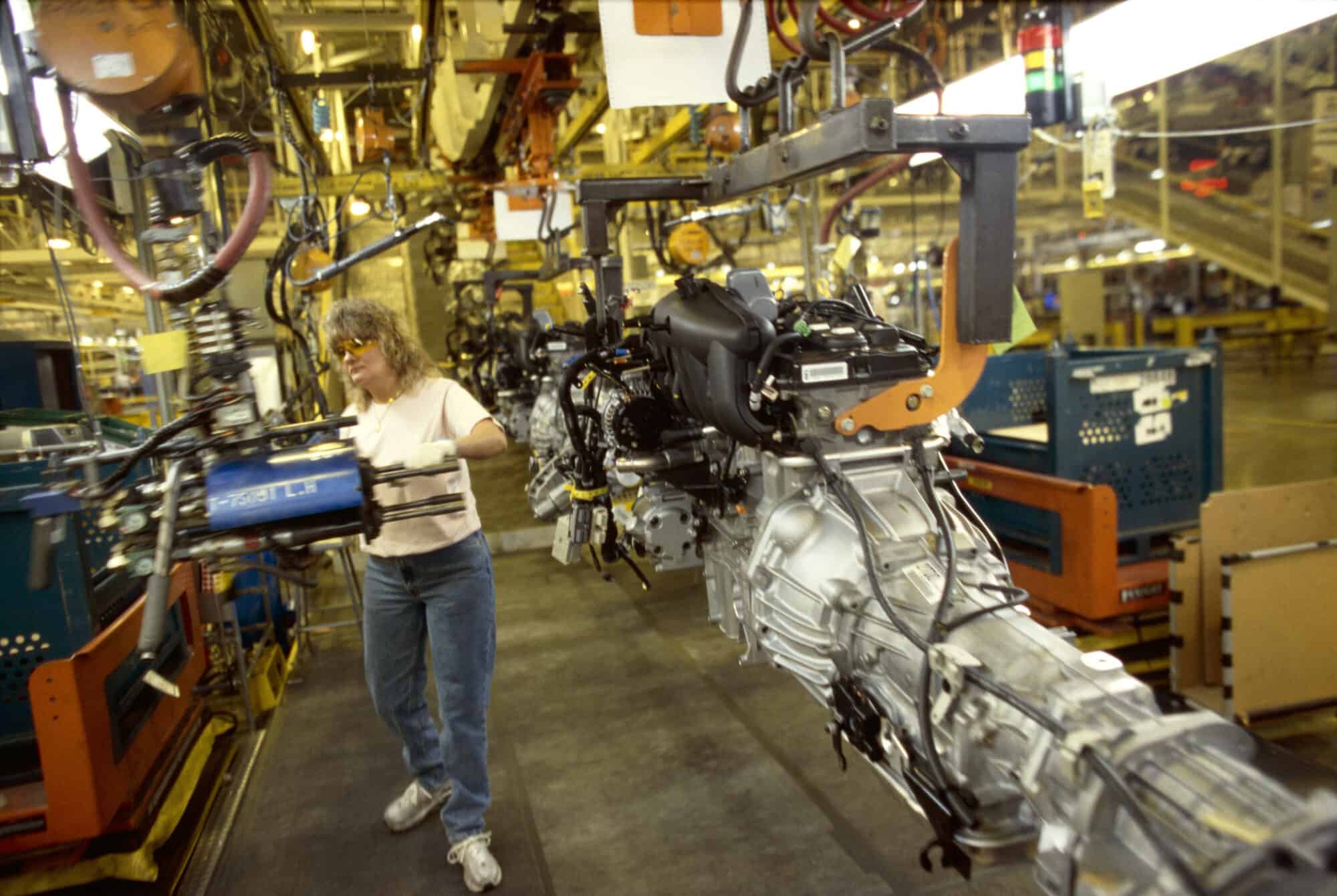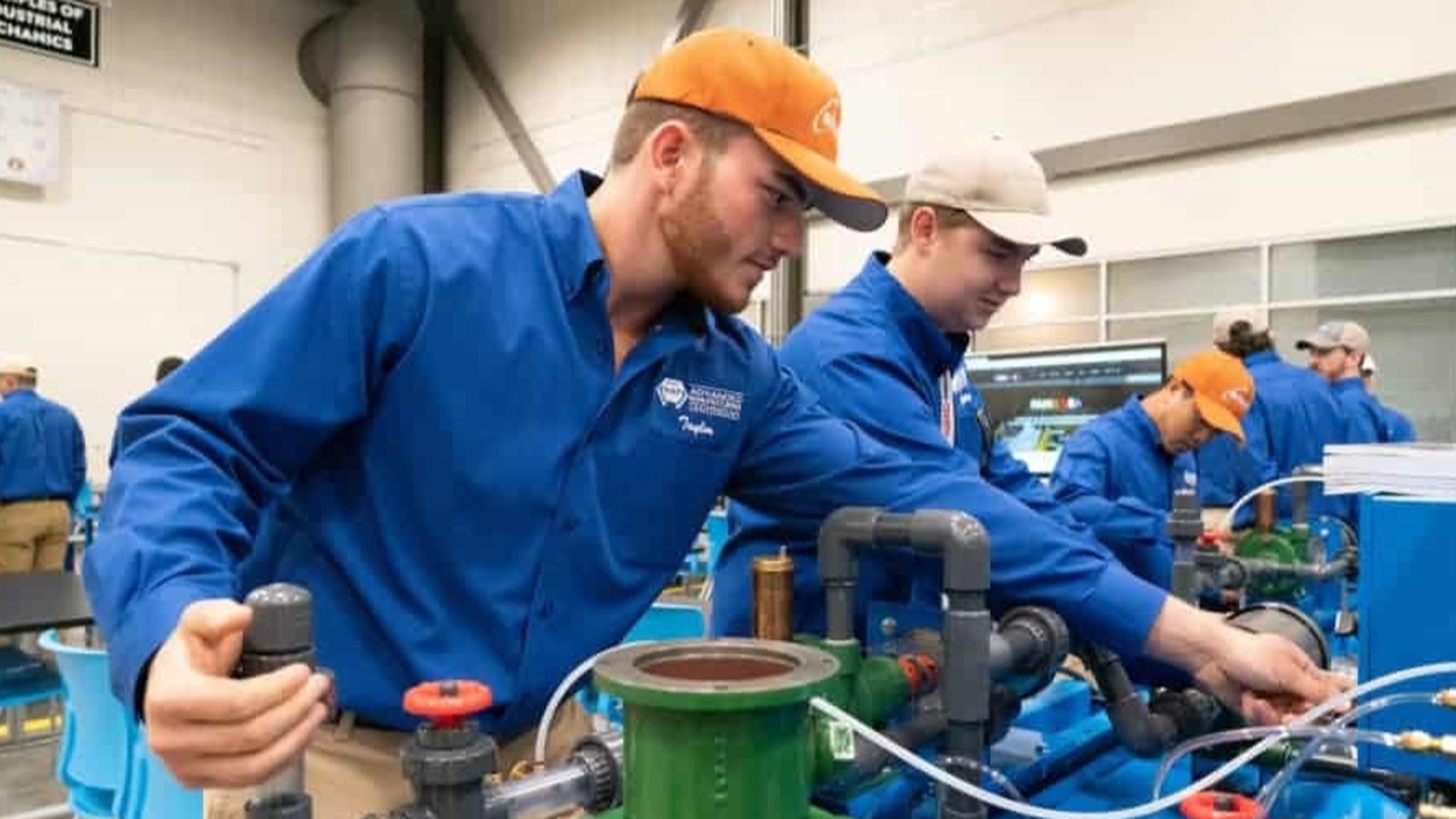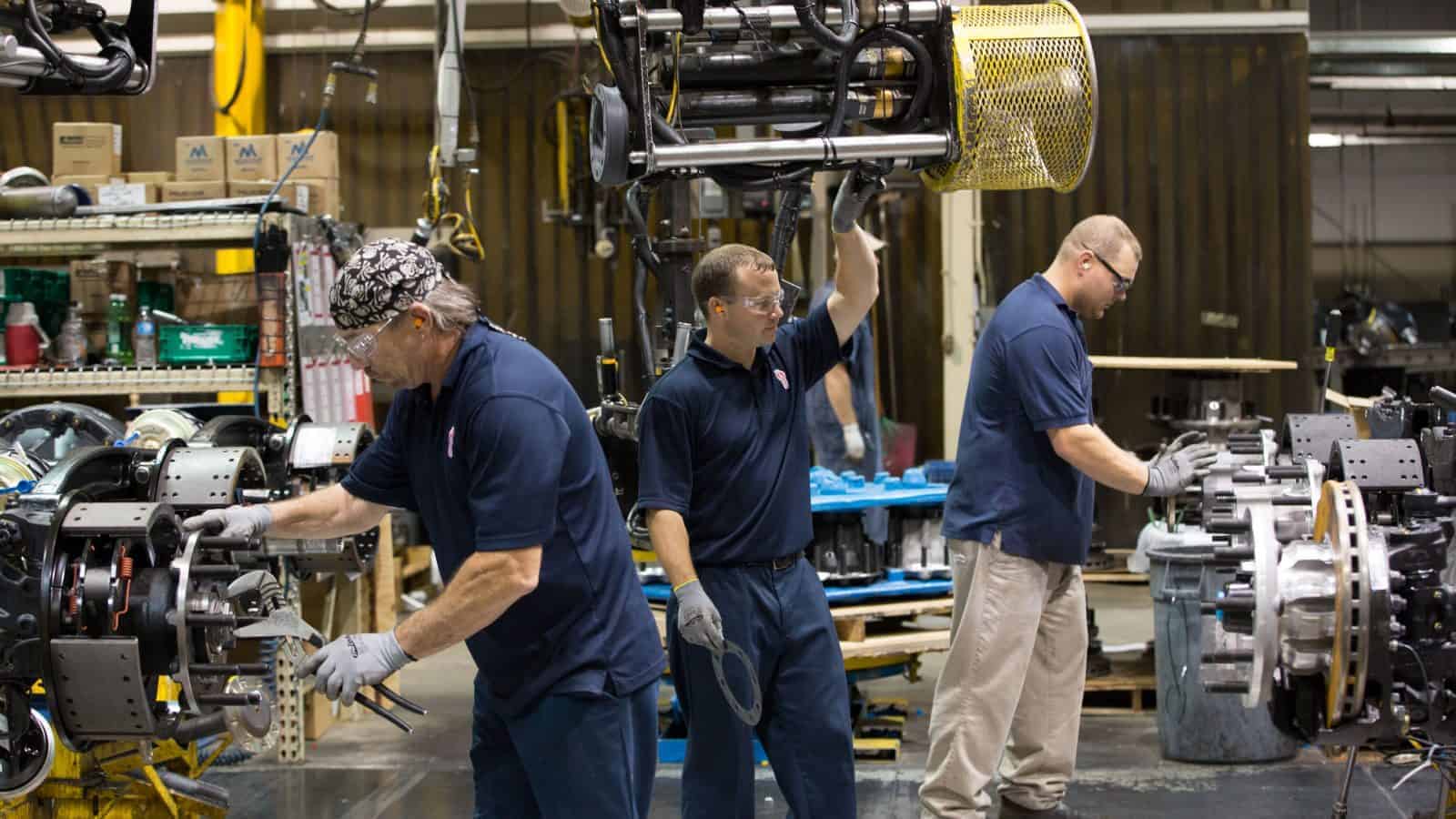Manufacturers Face Significant Cost Increases if Tax Bill Fails

U.S. manufacturers and other businesses are sharing the details of the potential economic fallout if Congress fails to pass NAM-supported, pro-growth tax legislation, The Wall Street Journal (subscription) reports.
What’s going on: “[L]arge public companies say the law as it stands is costing them hundreds of millions or billions of dollars, while some owners of small and medium-sized businesses say they wonder if their firms will survive.”
- The Tax Cuts and Jobs Act of 2017 allowed manufacturers across the U.S. to expand their businesses, hire and purchase new, much-needed equipment. But in 2022 and 2023, three critical provisions from the law—immediate expensing for domestic research and development, enhanced interest deductibility and full expensing—expired, hurting businesses of all sizes.
- In January, the House passed the Tax Relief for American Families and Workers Act, which would reinstate all three measures. The NAM has been pushing the Senate to pass the legislation, too.
Why it’s important: Lift truck and solutions manufacturer Hyster-Yale Materials Handling Inc. “spends around $100 million a year on R&D, and the law change that went into effect in 2022 increased its tax bill by about $25 million a year.”
- “So that’s $25 million less that I have to invest back into my business, whether it’s R&D, whether it’s plants and equipment [or] hiring new people,” Chief Financial Officer Scott Minder told the Journal.
- Other companies say the lack of action on the House-cleared tax bill “may prompt reduced investment in other areas and increase the rate of return required for new projects.”
Weighing a move: Hyster-Yale—which “spends around 80% of its research budget in the U.S.”—would like to keep its operations in the U.S., Minder continued, but it can’t guarantee that it will continue to do so without the return of the expired TCJA tax provisions.
- Other manufacturers are reporting a similar predicament.
The last word: “The stakes are clear: Congress must pass the Tax Relief for American Families and Workers Act or risk significant economic damage across the manufacturing sector,” said NAM Vice President of Domestic Policy Charles Crain.
- “Manufacturers are depending on Congress to restore these pro-growth tax policies, which support the investments in R&D and capital equipment that are so critical for manufacturing growth.”
U.S. Industrial Production Rises

U.S. industrial production increased modestly in March, in keeping with economist forecasts, according to baha.
What’s going on: “Industrial production in the United States rose by 0.4% in March after increasing 0.1% in the previous month, the Federal Reserve’s Board of Governors stated in its report published on Tuesday.”
The details: Manufacturing output increased 0.5% on a monthly basis and 0.8% on an annual basis. It rose 1.2% in February.
- Mining declined 1.4% in March and 2.0% year on year.
- The utilities index grew 2.0% for the month but declined 3.1% year on year.
Capacity utilization: Capacity utilization—a measure of potential output—for the industrial sector as a whole increased to 78.4%, up from 78.2% in February but “1.2 percentage points below its long-run average.”
What it means: These data are among “signs that manufacturing is starting to pick up,” MarketWatch (subscription) reports.
- “The S&P Global U.S. Manufacturing PMI has been in expansion territory for the past three months, and the ISM factory index was 50.3 in March, the first reading above the break-even level of 50 since September 2022.”
Manufacturer to Congress: Support the American Dream

Austin Ramirez is living proof that the American dream still works—when the right policies are in place.
The president and CEO of family-owned Husco, a Waukesha, Wisconsin-based, hydraulic and electromechanical control systems manufacturer, told lawmakers Thursday that his family was able to found and expand a successful business in large part thanks to pro-growth tax policies.
All in the family: “My dad came to the states from Puerto Rico as a 6-year-old and grew up to earn a master’s in aerospace engineering and a Harvard M.B.A.,” Ramirez said at a hearing of the House Ways and Means Committee.
- “In short, our story is the embodiment of the American dream. But it was made possible by American reality—the laws that all of you write in this very room have a direct, concrete impact on our ability to succeed.”
Impact of expirations: The 2017 Tax Cuts and Jobs Act made it possible for manufacturers across the country to invest in new equipment, pay for renovations and expansions, hire much-needed workers and more. It was “unquestionably a success,” according to Ramirez.
- But the 2022 and 2023 expiration of three manufacturing-critical tax provisions in the legislation—immediate expensing for domestic research and development, enhanced interest deductibility and full expensing, which the NAM has been urging legislators to reinstate—has already hit Ramirez’s business, and hard.
- “Husco now has to amortize our R&D expenses, making it far more costly for us to design customized, proprietary products for our customers,” Ramirez went on. “Debt financing is now more expensive … [a]nd we can no longer immediately expense the full cost of our capital equipment purchases, forcing [us] to make smaller investments, spread out over many years.”
More tax increases coming: Ramirez also highlighted the TCJA provisions that are set to expire next year and the economic damage the expiration would cause.
- “At the end of 2025, individual tax rates will increase and individual tax brackets will decrease,” he said. “These changes mean that pass-through businesses like Husco will have more of our income subject to a higher rate of tax. At the same time, the pass-through deduction will expire completely, doubling down on the tax hikes that we face. … [A]llowing tax reform to sunset will undermine much of the progress we’ve made since 2017.”
What must happen: Ramirez thanked the committee for passing the Tax Relief for American Families and Workers Act—and reminded them of work still to be done.
- “Congress must act now to restore expired provisions—and be prepared to act in 2025 to forestall even more damaging tax increases. Only by preserving the Tax Cuts and Jobs Act can Congress ensure that uniquely America stories like Husco remain possible.”
Senate Approves NLRB “Joint Employer” Repeal Proposal

The Senate this week approved a resolution to repeal the National Labor Relations Board joint employer rule, Reuters (subscription) reports.
What’s going on: In a 50–48 vote Wednesday, the Democrat-controlled Senate passed a Congressional Review Act resolution to block an NLRB “rule that would treat companies as the employers of many of their contract and franchise workers and require them to bargain with those workers’ unions.”
- President Biden pledged to veto the resolution, which the House approved in January. A veto would send the measure back to Congress, where it appears to lack the necessary votes for an override.
- The CRA “allows Congress to repeal agency rules through a majority vote in both houses.” The president must sign the resolution for it to take effect.
- The rule was scheduled to go into effect in February but was blocked by a federal judge in Texas. The NLRB is considering options in response to the decision.
What it would do: “The rule would treat companies as ‘joint employers’ of contract and franchise workers when they have control over key working conditions such as pay, scheduling, discipline and supervision, even if that control is indirect or not exercised.”
Why it would be problematic: The NLRB requirement would lead to confusion about which businesses should be considered employers, “disrupting franchising and routine contracting arrangements,” according to another Reuters article.
The NAM says: The joint employer rule would “harm manufacturers at a time when they need the flexibility and contingency offered through temporary and contract workers to best manage supply chain impacts, demand for manufactured products and other inflationary challenges,” the NAM told the NLRB in December.
Producer Prices Increase Less Than Expected

Prices paid by businesses to goods and services producers in the U.S. rose by slightly less than anticipated in March, according to Investing.com.
What’s going on: “The producer price index for final demand rose 0.2% last month, after rising by 0.6% in February, the Labor Department’s Bureau of Labor Statistics said. Economists had expected the PPI to gain 0.3%. In the 12 months through January, the PPI increased 2.1%, below the 2.2% expected, after climbing 1.6% in February.”
- “Core” PPI, which excludes food and energy prices, rose 0.2% on the month, for an annual increase of 2.4%.
- The data comes just a day after the release of a higher-than-anticipated consumer price index for last month.
The details: Services inflation stayed elevated, with a gain of 0.3% in prices in March, Barron’s reports.
- Goods prices, however, edged down 0.1%.
- A 1.6% decline in energy prices made up much of March’s overall decrease and outweighed a 0.8% increase in food prices.
Why it’s important: The news may mean an interest-rate cut from the Federal Reserve will come later than previously thought.
Manufacturers: Complex EPA Rule Will Disrupt Manufacturing Supply Chain
Washington, D.C. – Following the release of the Environmental Protection Agency’s recent rulemaking regarding limitations on emissions of ethylene oxide, National Association of Manufacturers Managing Vice President of Policy Chris Netram released the following statement:
“While the EPA listened to some of manufacturers’ concerns, such as allowing more time for companies throughout the supply chain to assess the impact on their operations, the rulemaking adds to the ongoing regulatory onslaught our industry has been facing.
“The agency’s decision to maintain the fenceline monitoring schedule at every five days for ethylene oxide creates a significant compliance burden for manufacturers, and the rule’s mandate that operations are completely shut down when small repairs are required will impact manufacturers’ ability to maintain consistent operations. The potential disruption to supply chains could make it more difficult to create jobs in communities across the country.”
-NAM-
The National Association of Manufacturers is the largest manufacturing association in the United States, representing small and large manufacturers in every industrial sector and in all 50 states. Manufacturing employs nearly 13 million men and women, contributes $2.89 trillion to the U.S. economy annually and accounts for 53% of private-sector research and development. The NAM is the powerful voice of the manufacturing community and the leading advocate for a policy agenda that helps manufacturers compete in the global economy and create jobs across the United States. For more information about the NAM or to follow us on Twitter and Facebook, please visit www.nam.org.
Consumer Prices Increased in March

Prices paid by consumers for goods and services rose last month, according to CNBC.
What’s going on: The consumer price index, “a broad measure of goods and services costs across the economy, rose 0.4% for the month, putting the 12-month inflation rate at 3.5%. Economists surveyed by Dow Jones had been looking for a 0.3% gain and a 3.4% year-over-year level.”
- March’s seasonally adjusted CPI increase was the same as February’s.
Core CPI: Core CPI, which excludes often volatile food and energy costs, also increased 0.4% on a monthly basis.
- Core CPI for March was 3.8% higher than it was in March 2023.
Why it’s important: CPI is the most widely used measure of inflation, and these data “indicat[e] that inflation is staying stubbornly higher and likely keeping the Federal Reserve on hold with interest rates.”
Study: Manufacturing in U.S. Could Need Up to 3.8 Million Workers

The U.S. manufacturing industry could require some 3.8 million jobs to be filled within the next decade, according to a new joint study from the Manufacturing Institute, the NAM’s 501c3 workforce development and education affiliate, and Deloitte.
What’s going on: “Taking charge: Manufacturers support growth with active workforce strategies” found that manufacturing in the U.S. has emerged from the global pandemic on strong footing and is likely to continue to grow in the next few years.
- That growth will call for even more skilled workers—particularly statisticians, data scientists, logisticians, engineers, computer and information systems managers, software developers and industrial maintenance technicians—spotlighting the need to build the national talent pipeline.
- “Pandemic-driven shifts have already created hundreds of thousands of new jobs, and now we are seeing increased demand for digital skills that need to be met or risk further widening of the talent gap,” said Manufacturing Institute President and Executive Director Carolyn Lee.
Key findings: Top takeaways from the report include:
- If workforce challenges are not addressed, more than 1.9 million of the up to 3.8 million jobs likely to be needed between this year and 2033 could go unfilled.
- Some 65% of manufacturers polled said attracting and retaining talent is their primary business challenge.
- About 90% said they are forming at least one partnership to better attract and retain employees, and on average they have at least four such partnerships.
- Approximately 47% indicated that apprenticeships, work study programs or internships at manufacturing companies would be the most effective way of increasing interest in the industry.
- Some 47% also said flexible work arrangements—such as flex shifts, shift swapping and split shifts—have been their top retention tool.
The bottom line: Manufacturers continue to face a talent shortage—and the MI has the initiatives and resources ready today to help manufacturers address these challenges.
- From the recent flexibility white paper—which explains how manufacturers can build and deploy flexibility options for the 49% of workers that are on the production teams—to the high school internship toolkit that allows manufacturers to start a recruiting pipeline in high schools, to the FAME USA apprenticeship program training global best multi-skilled maintenance technicians and more, the MI has solutions to the hurdles highlighted in this study. Learn more at themanufacturinginstitute.org.
NAM: OSHA “Walkaround” Rule an Example of Regulatory Onslaught

The U.S. Occupational Safety and Health Administration’s newly finalized “walkaround rule” is unlawful and will not further the agency’s mission of ensuring safe working conditions, the NAM said after the rule’s release.
What’s going on: The long-awaited final rule, which goes into effect May 31, states that “workers may authorize another employee to serve as their representative or select a non-employee,” according to the Department of Labor.
- The policy broadens the basis upon which a non-employee representative may be deemed “reasonably necessary to the conduct of an effective and thorough inspection.”
Why it’s problematic: In addition to having little to do with making workplaces safer, the new policy violates OSHA’s own mandate—and, quite possibly, manufacturers’ constitutional rights, the NAM said.
- The “rule does nothing to advance OSHA’s mission of ensuring safe working conditions,” said NAM Chief Legal Officer Linda Kelly. “Forcing businesses to accommodate third parties with no safety expertise in their facilities infringes on employers’ property rights, invites new liabilities and introduces elements of chaos and disruption to safety inspections. … [It also] clearly violates OSHA’s statutory mandate to conduct inspections within ‘reasonable limits and in a reasonable manner’ with ‘minimum burden’ on employers, and potentially violates manufacturers’ constitutional rights.”
Next steps: The NAM is weighing legal action to reverse the final rule.
Skilled Trades See Interest Uptick

More young people are choosing skilled trade jobs after high school, The Wall Street Journal (subscription) reports.
What’s going on: “Enrollment in vocational training programs is surging as overall enrollment in community colleges and four-year institutions has fallen. The number of students enrolled in vocational-focused community colleges rose 16% last year to its highest level since the National Student Clearinghouse began tracking such data in 2018. The ranks of students studying construction trades rose 23% during that time, while those in programs covering HVAC and vehicle maintenance and repair increased 7%.”
Why it’s important: The trades, including manufacturing, have experienced a worker shortage in recent years as the older generation of employees retires.
- Finding and retaining quality talent is consistently a top business challenge among manufacturers, according to the NAM’s Manufacturers’ Outlook Survey, a quarterly polling of the industry.
- But now, trade-apprenticeship demand is surging, perhaps a signal that positions will start to fill.
Perception change: For many years the vocational education wing of one high school in Sheboygan, Wisconsin, was called “greaser hall,” but lately that’s started to change, a counselor there told the Journal.
- “[B]usinesses have raised funds and donated new equipment, including robotic arms … [and] those classrooms now sit at the building’s main entrance. ‘There’s still a presumption that four-year college is the gold standard, but it doesn’t take as much work to get people to buy into the viability of other options,’ [he said].”
The last word: Indeed, the Manufacturing Institute, the NAM’s 501(c)3 nonprofit workforce development and education affiliate, is seeing significant growth in its FAME initiative, an earn-while-you-learn training program with more than 40 chapters in 16 states—and more forming all the time. FAME, which was founded by Toyota and is now led by the MI, is truly the American model of skills training, according to MI President and Executive Director Carolyn Lee.
- “FAME is training thousands of global best technicians nationwide and the number of program participants is on the rise,” she said. “This is good news for manufacturing, which sorely needs talent to continue to make the many, many things people use every day.”
